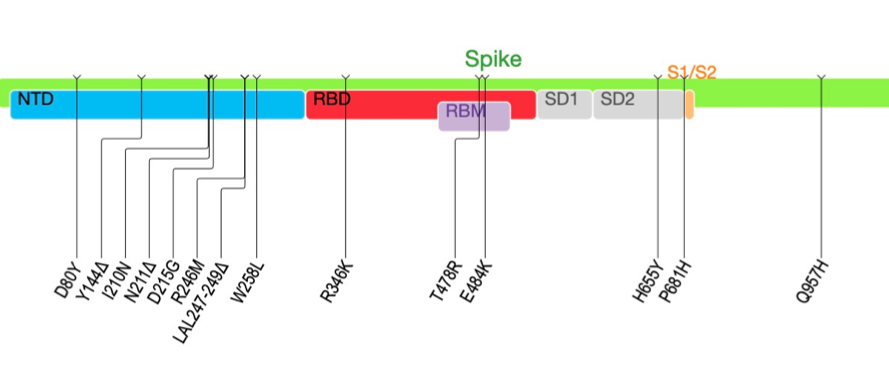
Confirmed Detection of eight (8) more genomes B.1.617.2 and two (2) community transmission of B.1.1.7 in South Africa, By Network for Genomic Surveillance in South Africa (NGS-SA), 13 May 2021
The eight new cases of B.1.617.2 variant have been detected from KwaZulu-Natal province. More specifically, these were cases in crew members of a commercial vessel that arrived in Durban Port from India.
The cases were isolated on the vessel, and other crew members have been quarantined according to national COVID-19 case management guidelines. The individuals who tested positive for COVID-19 did not disembark in South Africa, with exception of one that was admitted to hospital
The B.1.617.2 is spreading widely around the world, and this week was listed as a variant of concern (VOC) by @WHO . The reason for the increase of classification, form variant of interest (VOI) to VOC was due to evidence of rapid spread of B.1.617.2 in different countries.
Genomic surveillance in South Africa has also this week identified another two new cases of the B.1.1.7. In total, we have detected 13 confirmed cases of the B.1.1.7 in South Africa. The two new cases of B.1.1.7 were identified in Gauteng – there was no recent travel history
At present, we have identified three of the four main variants of concern in South Africa (B.1.351/501Y.V2, B.1.1.7/501Y.V2 and the B.1.617.2).
New results from the start of the third wave in the Northern Cape show that this was dominated by the B.1.351/501Y.V2 . At present, we are working to classify variants in the the Free State and Gauteng, which were provinces that are seeing a surge of infections.
NGS-SA is a consortium of scientists funded by the Department of Science and Innovation (DSI) and the South Africa Medical Research Council (SAMRC).
All new sequences are available @GISAID ! More info: krisp.org.za/ngs-sa/ngs-sa_…
• • •
Missing some Tweet in this thread? You can try to
force a refresh













